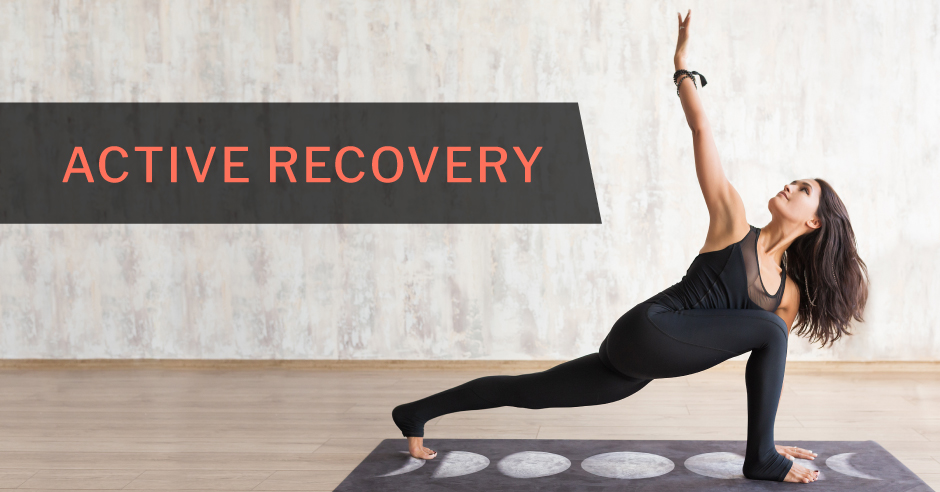In the world of fitness, rest days are essential to allow your body to recover and repair itself. However, have you ever considered adding active recovery to your routine? Active recovery involves low-intensity exercises and movements that promote circulation and muscle repair while reducing muscle soreness and stiffness. In this post, we’ll explore the benefits of active recovery compared to rest days, the best active recovery workouts, and the importance of stretching during active recovery.
Active Recovery Vs. Rest Day
Rest days are an important part of any training plan. They allow your body to repair itself from the micro-trauma caused by exercise, replenish energy stores, and reduce the risk of injury. However, rest days don’t necessarily mean you need to be completely sedentary. Active recovery, on the other hand, involves low-intensity exercise that promotes circulation and helps to flush out metabolic waste from the muscles.
Active recovery has been shown to reduce muscle soreness, improve flexibility, and increase blood flow to the muscles, which can help to speed up recovery time. Additionally, active recovery has also been shown to improve mental well-being and reduce stress levels.
Active Recovery Workouts
There are plenty of low-intensity workouts that you can do on your active recovery days. Walking, cycling, swimming, and yoga are all great options that will get your body moving without putting too much stress on your muscles. The key is to choose an activity that is enjoyable and doesn’t feel like a chore. The point of active recovery is to help you recover faster, not to add additional stress to your body.
Another option for active recovery is foam rolling. Foam rolling is a form of self-myofascial release that involves using a foam roller to apply pressure to the muscles. This helps to break up adhesions and knots in the muscle tissue, which can help to reduce muscle soreness and improve flexibility.
Stretching?
Stretching is an essential part of any active recovery routine. Stretching helps to improve flexibility, reduce muscle soreness, and prevent injury. However, it’s important to choose the right type of stretching for your active recovery days. Dynamic stretching, which involves moving through a range of motion, is ideal for active recovery days. This type of stretching helps to improve blood flow to the muscles and prepares them for movement.
Static stretching, which involves holding a stretch for an extended period, is better suited for post-workout stretching or as part of a cool-down routine. This type of stretching can help to improve flexibility and reduce muscle soreness but is not recommended for active recovery days as it can cause muscle fatigue.
Final Thoughts
In conclusion, active recovery is a great way to speed up your recovery time and improve your overall fitness. By incorporating low-intensity exercise and stretching into your rest days, you can reduce muscle soreness, improve flexibility, and promote circulation to help your muscles repair and recover faster. So, next time you’re tempted to spend your rest day on the couch, try incorporating some active recovery into your routine instead!
More Articles
Transformative Discipline: Exploring the Principles of 75 Hard
Recently, my friends and I were thinking of ways to start the new year positively, and 75 Hard will put us to the test in an effective way. Setting off on a path toward resilience and self-improvement frequently calls for more than just internal drive; it also calls...
The Best Full Body HIIT Workout You Can Do
Workouts involving full-body high-intensity interval training (HIIT) are a quick and easy approach to optimize your fitness progress. These workouts usually consist of a series of heart-pumping, intensive movements that target numerous muscle groups at once,...
Ab Workouts: Creating a Home Gym that Fits Your Lifestyle
Ab workouts are an important part of any fitness regimen because they target the core muscles that are crucial for stability, posture, and general strength. You can choose from a wide range of workouts to achieve a stronger core or a toned stomach. Engaging the...
Home Sweet Home Gym: Your Gateway to a Healthier Lifestyle
Picture this: no more rushing to the gym during peak hours, no waiting for your favorite machine, and no distractions from strangers. Instead, imagine a space where you can focus entirely on your fitness goals, set your workout schedule, and curate an environment that...
Mastering Back Exercises with Dumbbells
Dumbbell back workouts are a flexible and efficient way to improve your general strength, posture, and muscle growth. Dumbbells are a great addition to any exercise regimen, whether you're a back-health fanatic, an athlete, or just someone who enjoys working out....
The Fierce Flats
With our "Fierce Flat’s" blog, you'll be able to dive into the realm of lifting like never before. Forget about flashy kicks and high-tech soles; there's a new look in town. This blog will break down Converse and Vans' game-changing styles for all of your lifting...











